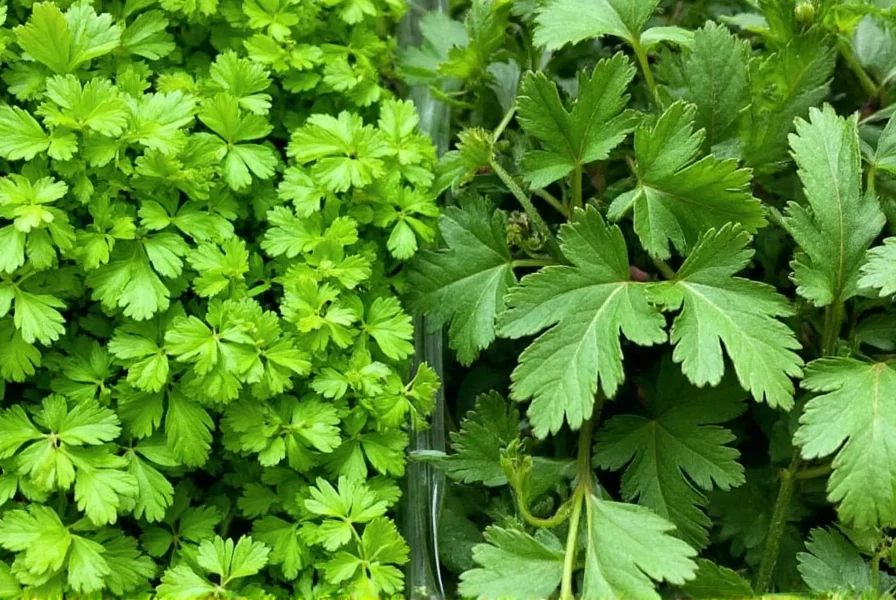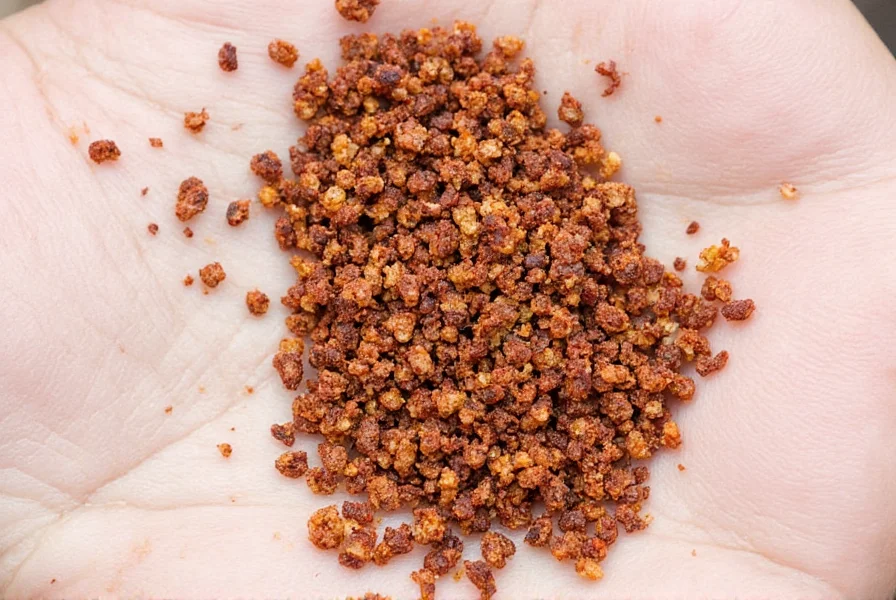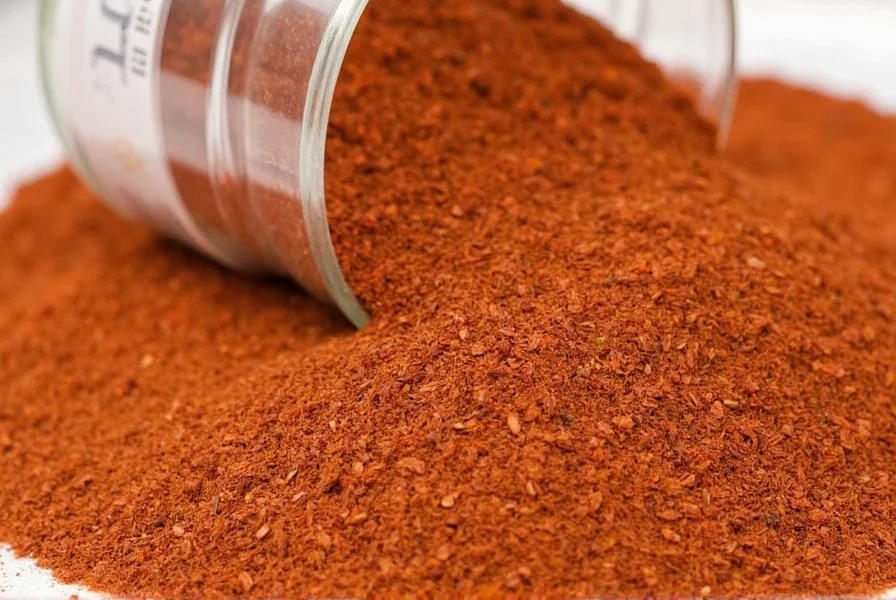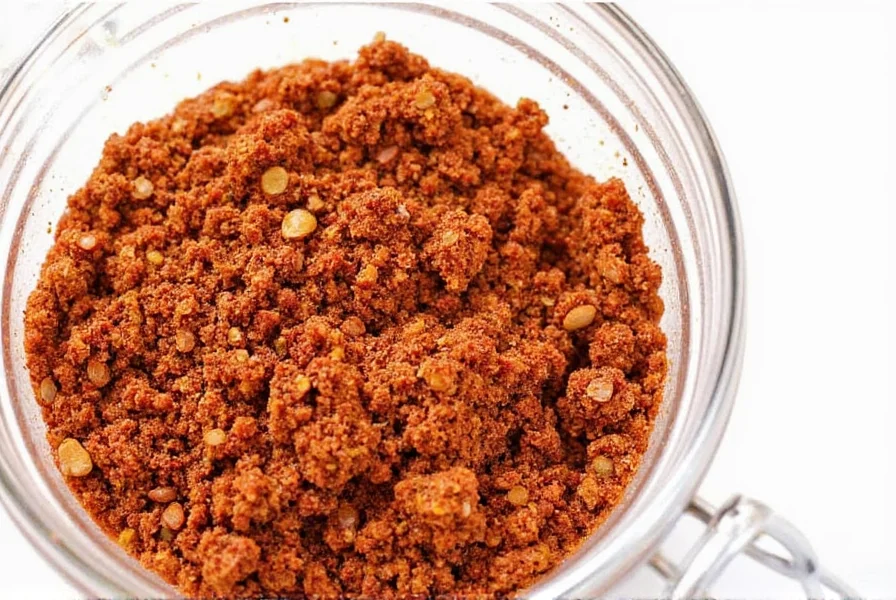Table of Contents
What Are Chipotle Flakes?
Chipotle flakes are dried and ground chipotle peppers, which are smoked jalapeños. The smoking process gives them a distinctive smoky flavor with medium heat (2,500-8,000 Scoville Heat Units). Unlike fresh jalapeños, chipotle flakes offer a complex taste profile that combines sweetness, smokiness, and heat, making them ideal for enhancing a wide range of dishes.
According to culinary experts from America's Test Kitchen, chipotle flakes are a versatile ingredient that adds depth to both traditional Mexican dishes and modern fusion cuisine. They're commonly used in sauces, marinades, rubs, and even desserts for a unique flavor twist.
Flavor Profile and Heat Levels
Chipotle flakes provide a balanced flavor with three key elements: smokiness, sweetness, and heat. The smoking process reduces the raw heat of fresh jalapeños while intensifying the smoky notes, creating a more complex flavor than regular chili peppers.
| Spice | Heat Level (Scoville Units) | Flavor Notes | Best Uses |
|---|---|---|---|
| Chipotle Flakes | 2,500-8,000 | Smoky, Sweet, Spicy | Sauces, Stews, Tacos, Rubs |
| Chili Powder | 500-2,500 | Earthy, Warm | Meat Rubs, Chili, Soups |
| Cayenne Pepper | 30,000-50,000 | Hot, Sharp | Spicy Dips, Sauces, Seasoning |
| Paprika | 0-1,000 | Smoky, Sweet | Roasted Vegetables, Eggs, Baked Goods |

Chipotle flakes are significantly milder than cayenne pepper but offer more complexity than regular paprika. The smoking process creates a unique flavor profile that enhances dishes without overwhelming them with pure heat.
How to Use Chipotle Flakes in Cooking
Chipotle flakes are incredibly versatile. Here are specific ways to incorporate them into your cooking:
Chipotle-Lime Chicken Tacos Recipe
Ingredients:
- 1 lb chicken thighs, diced
- 2 tbsp chipotle flakes
- 2 tbsp lime juice
- 1 tbsp olive oil
- 1 tsp honey
- 1 clove garlic, minced
- Taco shells and toppings of choice
Instructions:
- Combine chipotle flakes, lime juice, olive oil, honey, and garlic in a bowl
- Add chicken and marinate for at least 30 minutes
- Grill or pan-sear chicken until fully cooked
- Serve in taco shells with fresh toppings like avocado, cilantro, and sour cream
Chipotle-Spiced Roasted Vegetables
Ingredients:
- 2 cups mixed vegetables (bell peppers, zucchini, red onion)
- 1 tbsp chipotle flakes
- 2 tbsp olive oil
- 1 tsp smoked paprika
- Salt and pepper to taste
Instructions:
- Preheat oven to 400°F (200°C)
- Toss vegetables with olive oil, chipotle flakes, smoked paprika, salt, and pepper
- Spread on baking sheet and roast for 25-30 minutes until tender

Buying Guide for Chipotle Flakes
When purchasing chipotle flakes, consider these key factors:
Key Buying Considerations
- Origin: Authentic chipotle flakes come from Mexico. Look for products that specify "Made in Mexico" or "Mexican-grown peppers"
- Smoking Process: Traditional chipotles are smoked over wood fires. Avoid products that use artificial smoke flavoring
- Heat Level: Check the Scoville rating on packaging. Most chipotle flakes range from 2,500-8,000 SHU
- Texture: Good quality flakes should have consistent size and not be too fine or too coarse
Top Recommended Brands
- La Costeña Chipotle Flakes: $4.99-$6.99 per 2oz jar. Known for authentic Mexican flavor and consistent heat level. Available at most major grocery stores.
- McCormick Chipotle Flakes: $3.99-$5.99 per 1.5oz jar. Widely available and consistent quality. Great for everyday cooking.
- Penzeys Chipotle Flakes: $7.99-$9.99 per 2oz jar. Premium quality with strong smoky aroma. Best for gourmet cooking and special occasions.
- Spicewalla Chipotle Flakes: $6.99 per 1oz jar. Small-batch, organic option with exceptional flavor complexity.

Pro Tips for Working with Chipotle Flakes
- Start Small: Begin with 1/4 teaspoon per serving and adjust to taste. Chipotle flakes' heat builds over time.
- Balance with Acid: Pair with lime juice, vinegar, or tomatoes to balance the smokiness.
- Combine with Dairy: Sour cream, yogurt, or cheese help neutralize heat while enhancing flavor.
- Rehydrate for Smooth Sauces: Soak flakes in warm water for 10 minutes before blending for smoother texture.
- Store Properly: Keep in an airtight container away from light and heat. For maximum freshness, store in the refrigerator.

Frequently Asked Questions
What are chipotle flakes made of?
Chipotle flakes are made from dried and ground chipotle peppers, which are smoked and dried jalapeño peppers. The smoking process gives them their distinctive flavor profile that combines smokiness with moderate heat.
How spicy are chipotle flakes compared to other peppers?
Chipotle flakes typically range from 2,500 to 8,000 Scoville heat units, making them medium to medium-high in heat. They're milder than cayenne pepper but spicier than regular paprika. The smoking process actually reduces some of the raw heat while adding complex flavor notes.
What's the difference between chipotle flakes and chipotle powder?
The main difference is texture. Chipotle flakes are coarsely ground, providing visible flecks and a more textured addition to dishes, while chipotle powder is finely ground to a smooth consistency. Flakes often retain more of the smoky aroma since they're less processed.
How should I store chipotle flakes to maintain freshness?
Store chipotle flakes in an airtight container in a cool, dark place away from heat and moisture. Properly stored, they can maintain their flavor for 1-2 years. For longer storage, keep them in the refrigerator or freezer to preserve their potency and aroma.
Can I substitute chipotle flakes if I don't have them?
Yes, but with some flavor differences. You can use chipotle powder (use 3/4 the amount of flakes called for), smoked paprika plus a pinch of cayenne, or even adobo sauce from canned chipotles. Note that none will perfectly replicate the texture and flavor balance of chipotle flakes.
Are chipotle flakes gluten-free and suitable for special diets?
Pure chipotle flakes are naturally gluten-free, vegan, and keto-friendly. However, always check the packaging for potential cross-contamination warnings if you have severe allergies, and verify there are no added ingredients like anti-caking agents that might affect dietary restrictions.
Can I use chipotle flakes in baking?
Yes! Chipotle flakes can add a surprising depth to chocolate desserts, breads, and even cookies. Start with very small amounts (1/8 teaspoon per recipe) and adjust to taste. They pair particularly well with dark chocolate and caramel flavors.
How much chipotle flakes should I use for chili?
For a standard 4-quart pot of chili, start with 1-2 teaspoons of chipotle flakes. Remember that the heat will intensify as the chili simmers, so you can always add more later.
Conclusion
Chipotle flakes are a versatile and flavorful spice that brings a unique smoky heat to any dish. Whether you're a seasoned chef or a home cook looking to experiment, these flakes offer endless possibilities for enhancing your meals. From sauces to rubs, and from tacos to cocktails, chipotle flakes are a must-have in every spice cabinet.
By understanding their flavor profile, learning how to use them effectively, and choosing the right product, you can unlock the full potential of this amazing spice. So go ahead—add a sprinkle of chipotle flakes to your next meal and let the smoky magic begin!











 浙公网安备
33010002000092号
浙公网安备
33010002000092号 浙B2-20120091-4
浙B2-20120091-4